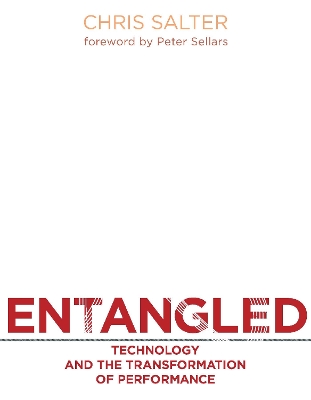The MIT Press
2 total works
How technologies, from the mechanical to the computational, have transformed artistic performance practices.
This ambitious and comprehensive book explores technology's influence on artistic performance practices in the twentieth and twenty-first centuries. In Entangled, Chris Salter shows that technologies, from the mechanical to the computational-from a "ballet of objects and lights" staged by Diaghilev's Ballets Russes in 1917 to contemporary technologically-enabled "responsive environments"-have been entangled with performance across a wide range of disciplines. Salter examines the rich and extensive history of performance experimentation in theater, music, dance, the visual and media arts, architecture, and other fields; explores the political, social, and economic context for the adoption of technological practices in art; and shows that these practices have a set of common histories despite their disciplinary borders.
Each chapter in Entangled focuses on a different form: theater scenography, architecture, video and image making, music and sound composition, body-based arts, mechanical and robotic art, and interactive environments constructed for research, festivals, and participatory urban spaces. Salter's exhaustive survey and analysis shows that performance traditions have much to teach other emerging practices-in particular in the burgeoning fields of new media. Students of digital art need to master not only electronics and code but also dramaturgy, lighting, sound, and scenography. Entangled will serve as an invaluable reference for students, researchers, and artists as well as a handbook for future praxis.
In Alien Agency, Chris Salter tells three stories of art in the making. Salter examines three works in which the materials of art—the “stuff of the world”—behave and perform in ways beyond the creator's intent, becoming unknown, surprising, alien. Studying these works—all three deeply embroiled in and enabled by science and technology—allows him to focus on practice through the experiential and affective elements of creation. Drawing on extensive ethnographic observation and on his own experience as an artist, Salter investigates how researcher-creators organize the conditions for these experimental, performative assemblages—assemblages that sidestep dichotomies between subjects and objects, human and nonhuman, mind and body, knowing and experiencing.
Salter reports on the sound artists Bruce Odland and Sam Auinger (O+A) and their efforts to capture and then project unnoticed urban sounds; tracks the multi-year project TEMA (Tissue Engineered Muscle Actuators) at the art research lab SymbioticA and its construction of a hybrid “semi-living” machine from specially grown mouse muscle cells; and describes a research-creation project (which he himself initiated) that uses light, vibration, sound, smell, and other sensory stimuli to enable audiences to experience other cultures' “ways of sensing.” Combining theory, diary, history, and ethnography, Salter also explores a broader question: How do new things emerge into the world and what do they do?

